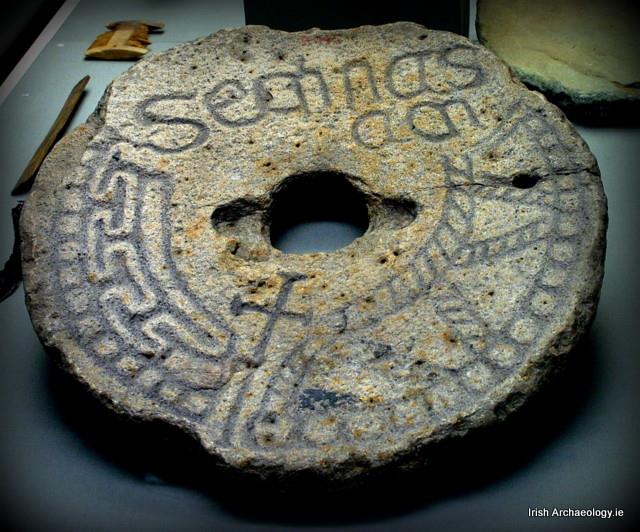A rotary quern stone (hand-mill) for grinding grain which was reused as a grave marker at Clonmacnoise during early medieval period. Founded in the 6th century AD, Clonmacnoise was one of the great monasteries of early Ireland and several hundred memorial slabs have been found at the site. This specific one is inscribed with the Irish name ‘Sechnasach’ and it has been speculated that this may represent Sechnusach, King of the Ui Maine (a territory in eastern Galway/South Roscommon) who died in AD 709 (Lionard, 1961). The artefact is now housed at the National Museum of Ireland, Kildare Street, Dublin.
Reference
Lionard, P. (1961) `Early Irish Grave Slabs’, PRIA 61 C, pp. 95–169




Looks like a satyre on this particular Sechnasach, in case he was the King of Uí Maine, isn’t it? Otherwise, he could be any other Sechnasach important in the monastery.
I’ve read something about refused/broken querns in the doorways of early irish medieval houses as a sign of abandonement of the home.